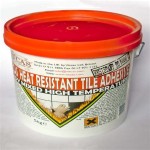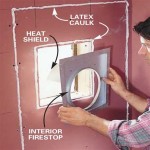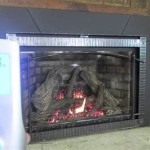What Do You Clean A Brick Fireplace With?
Maintaining a brick fireplace involves regular cleaning to remove soot, ash, and other debris that accumulate from burning wood. The porous nature of brick makes it susceptible to staining, requiring appropriate cleaning methods and materials to restore its appearance. The selection of cleaning agents depends on the type and severity of the staining, as well as the desired level of cleaning. Improper cleaning techniques can damage the brick, mortar, or surrounding areas. Therefore, understanding the appropriate cleaning process and selecting the right tools and chemicals is paramount for effective fireplace maintenance.
Before initiating any cleaning process, it is crucial to identify the type of staining present and assess the condition of the brick and mortar. Soot and ash are common byproducts of burning wood and typically present as a black or gray residue. Water stains may appear as discoloration caused by leaks or condensation. Efflorescence, a white, powdery deposit, results from the migration of salts to the brick surface. The age and condition of the brick and mortar are also important factors. Older brick may be more delicate and require a gentler approach compared to newer, more durable bricks. Compromised mortar can disintegrate under harsh cleaning methods, necessitating repair work after the cleaning process.
Safety is another paramount concern when cleaning a brick fireplace. Wearing protective gear, such as gloves, goggles, and a dust mask, is essential to protect against harsh chemicals and airborne particles. Ensuring adequate ventilation by opening windows or doors is also necessary to mitigate the risks associated with cleaning agents. Furthermore, protecting surrounding surfaces, such as flooring and furniture, with drop cloths or plastic sheeting prevents accidental damage or staining. Always test cleaning solutions in an inconspicuous area before applying them to the entire fireplace to check for adverse reactions or discoloration.
Key Point 1: Gathering the Necessary Supplies
The success of cleaning a brick fireplace hinges on having the right supplies readily available. These supplies typically include a variety of cleaning agents, depending on the type and severity of the stains. For routine cleaning, a solution of mild dish soap and warm water may suffice. For more stubborn soot stains, specialized brick cleaners or trisodium phosphate (TSP) solutions may be required. It is imperative to follow the manufacturer's instructions when using chemical cleaners, paying close attention to dilution ratios and safety precautions.
Beyond cleaning agents, a selection of scrubbing tools is essential. A stiff-bristled brush is ideal for loosening soot and debris from the brick surface. A smaller scrub brush or toothbrush is helpful for reaching tight corners and crevices. Sponges are useful for rinsing and wiping down the cleaned areas. A putty knife or scraper can be employed to carefully remove any stubborn deposits or buildup. Avoid using abrasive materials like steel wool, as they can scratch the brick surface.
In addition to cleaning agents and scrubbing tools, other essential supplies include buckets or containers for holding cleaning solutions, clean water for rinsing, drop cloths or plastic sheeting to protect surrounding surfaces, and personal protective equipment (PPE) such as gloves, goggles, and a dust mask. A spray bottle can also be useful for applying cleaning solutions evenly to the brick surface. Having all these supplies organized and within reach streamlines the cleaning process and minimizes interruptions.
Key Point 2: Step-by-Step Cleaning Process
The cleaning process should start by preparing the area around the fireplace. Remove any loose debris, such as ashes and soot, using a brush and dustpan or a vacuum cleaner with a brush attachment. Cover the surrounding floor and furniture with drop cloths or plastic sheeting to protect them from splashes and spills. Ensure adequate ventilation by opening windows or doors.
Next, prepare the cleaning solution based on the type of stain and the manufacturer's instructions. For a mild cleaning, mix a small amount of dish soap with warm water. For more stubborn stains, create a solution of TSP and water, following the recommended dilution ratio. Always wear gloves and goggles when handling TSP, as it can be irritating to the skin and eyes. Test the cleaning solution in an inconspicuous area of the brick to ensure it does not cause any discoloration or damage.
Apply the cleaning solution to the brick surface using a spray bottle or sponge. Allow the solution to dwell for a few minutes to loosen the soot and grime. Use a stiff-bristled brush to scrub the brick, working in small sections. Pay close attention to crevices and corners where soot tends to accumulate. For stubborn stains, you may need to scrub more vigorously or reapply the cleaning solution.
Rinse the brick thoroughly with clean water to remove any remaining cleaning solution and loosened debris. Use a sponge or clean cloth to wipe down the surface. If necessary, repeat the scrubbing and rinsing process until the brick is clean. Once the brick is clean, allow it to air dry completely before using the fireplace. You can speed up the drying process by using a fan.
Key Point 3: Addressing Specific Cleaning Challenges
While general cleaning methods are effective for removing soot and ash, certain stains require specialized treatment. Efflorescence, the white, powdery deposit caused by salt migration, can be removed using a stiff brush and a solution of water and muriatic acid. However, muriatic acid is a corrosive substance and must be handled with extreme care. Always wear gloves, goggles, and a respirator when working with muriatic acid, and follow the manufacturer's instructions carefully. After applying the acid solution, rinse the brick thoroughly with clean water.
Creosote, a tar-like substance that accumulates in chimneys and fireplaces, is another challenging stain to remove. Creosote is highly flammable and can pose a fire hazard if left untreated. Specialized creosote removers are available at most hardware stores. These removers typically come in the form of sprays or foams that are applied to the creosote buildup. Follow the manufacturer's instructions carefully when using creosote removers.
Rust stains can occur on brick fireplaces due to moisture and metal components. To remove rust stains, try a solution of lemon juice and salt. Apply the mixture to the rust stain and let it sit for a few minutes. Then, scrub the area with a stiff brush and rinse thoroughly with clean water. Alternatively, commercial rust removers are available, but be sure to test them in an inconspicuous area first to avoid discoloration.
For stubborn stains that resist traditional cleaning methods, consider using a pressure washer. However, exercise caution when pressure washing brick, as the high pressure can damage the brick and mortar. Use a wide-angle nozzle and maintain a safe distance from the brick surface. Always test the pressure washer in an inconspicuous area first to ensure it does not cause any damage.
Preventative measures are crucial for minimizing the need for extensive cleaning. Regularly cleaning the fireplace after each use helps prevent the buildup of soot and ash. Ensuring proper ventilation during burning reduces the accumulation of creosote. Addressing any leaks or moisture problems promptly prevents water stains and efflorescence. By taking these preventative steps, the brick fireplace can maintain its appearance and structural integrity over time.
Furthermore, consider applying a sealant to the brick surface after cleaning. A sealant helps protect the brick from future staining and makes it easier to clean. Choose a sealant that is specifically designed for brick and follow the manufacturer's instructions carefully. Regular maintenance and preventative measures will ensure the fireplace remains a focal point of the home for years to come.

How To Clean Internal Bricks On A Fireplace Sharn S House

How To Clean Brick The Home Depot

How To Clean A Fireplace Diy Basics

Vane Cottage Chemical Brick Mortar Soot Cleaner 6

Best Way To Clean A Fireplace Stacy Risenmay

How To Clean Internal Bricks On A Fireplace Sharn S House

How To Clean Brick The Home Depot

How To Clean Fireplace Bricks Simple Practical Beautiful

Fireplace Cleaning Tutorial Kippi At Home

How To Clean A Brick Fireplace
Related Posts








